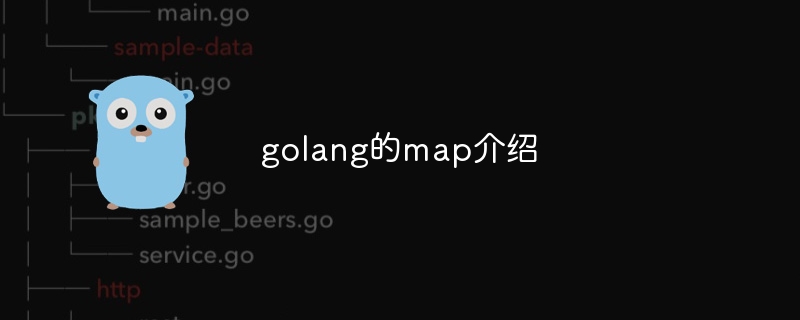Home >Backend Development >Golang >Introduction to map in golang
Introduction to map in golang
- 尊渡假赌尊渡假赌尊渡假赌Original
- 2023-12-18 10:38:031321browse
In Go language, map is an unordered set of key-value pairs, also known as hash table or dictionary. Map is implemented using hash algorithm, which can efficiently perform insertion, search and deletion operations. It requires Note that map is a reference type. When a map is passed to a function or assigned to other variables, a reference to the map is actually passed, and multiple variables share the same map.

# Operating system for this tutorial: Windows 10 system, Dell G3 computer.
In the Go language, map is an unordered collection of key-value pairs, also known as a hash table or dictionary. Map is implemented using a hash algorithm, which can efficiently perform insertion, search, and deletion operations.
The following are some commonly used map methods and operations:
-
Create map:
- Use literals to initialize map: m := map[keyType]valueType{}
- Use the make function to create an empty map: m := make(map[keyType]valueType)
-
Add or Modify element:
- m[key] = value: Add the key-value pair to the map. If the key already exists, the corresponding value will be updated.
-
Get the element:
- value, ok := m[key]: Get the corresponding value based on the key, ok indicates whether the value exists key.
-
Delete elements:
- delete(m, key): Delete the specified key and its corresponding value.
-
Traverse the map:
- Use a for range loop to traverse the map: for key, value := range m { ... }
-
Determine whether the key exists:
- value, ok := m[key]: Determine whether the key exists in the map by judging the value of ok.
-
Get the length of the map:
- Use len(m) to get the number of key-value pairs of the map.
It should be noted that map is a reference type. When map is passed to a function or assigned to other variables, a reference to map is actually passed. Multiple Variables share the same map. Therefore, when using map in concurrent programming, appropriate synchronization mechanisms need to be adopted to ensure concurrency safety.
In addition, the key type of map can be any comparable type, such as integer, floating point, string, structure, etc., but slices, functions and structure types containing slices cannot be used as map keys. type. Value types can be any type, including basic types, composite types, interface types, etc.
To summarize, map is an efficient data structure used to store key-value pair information. By mastering the basic operations of map, you can easily perform data storage, search, and deletion operations in the Go language.
The above is the detailed content of Introduction to map in golang. For more information, please follow other related articles on the PHP Chinese website!

